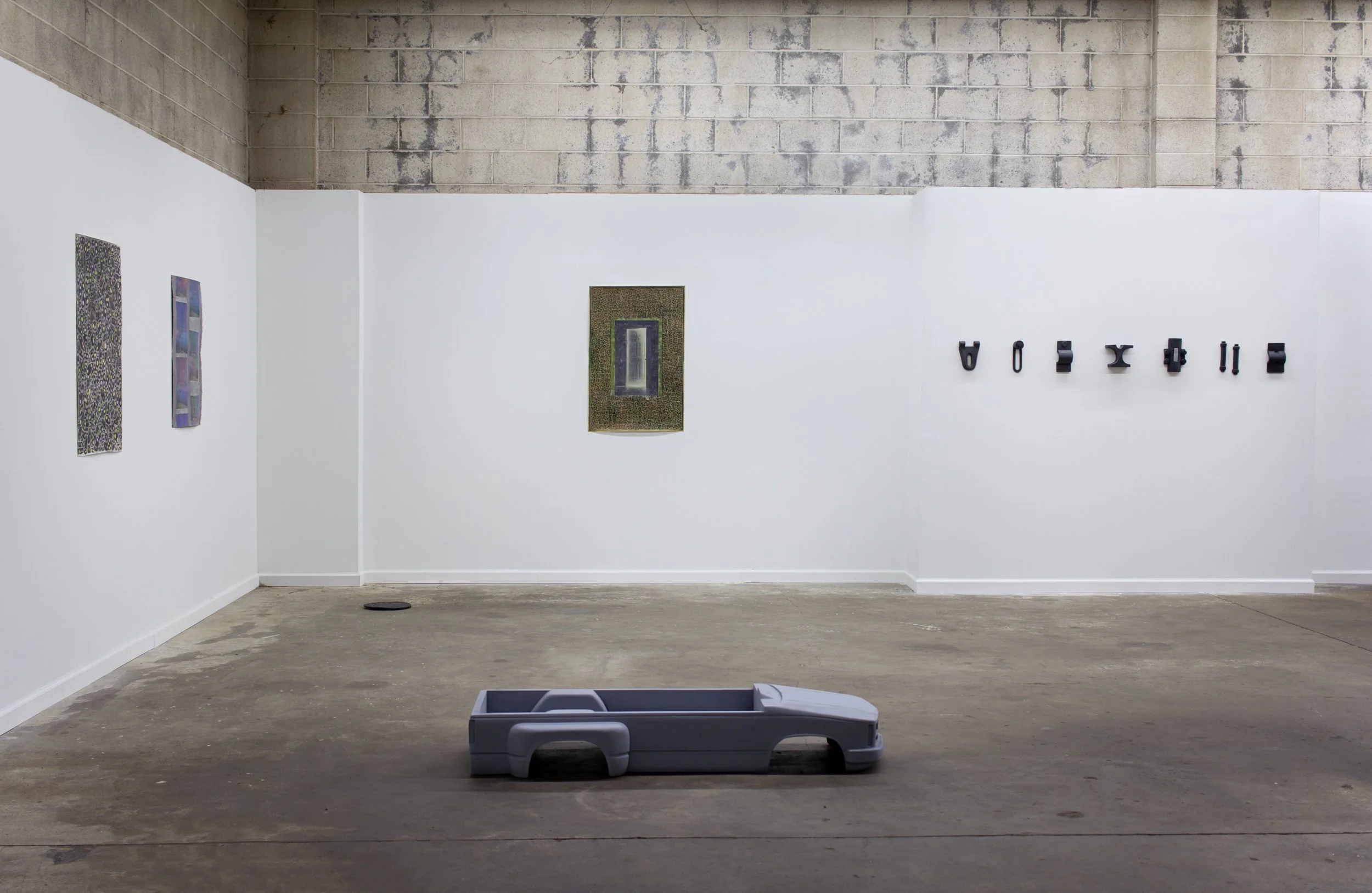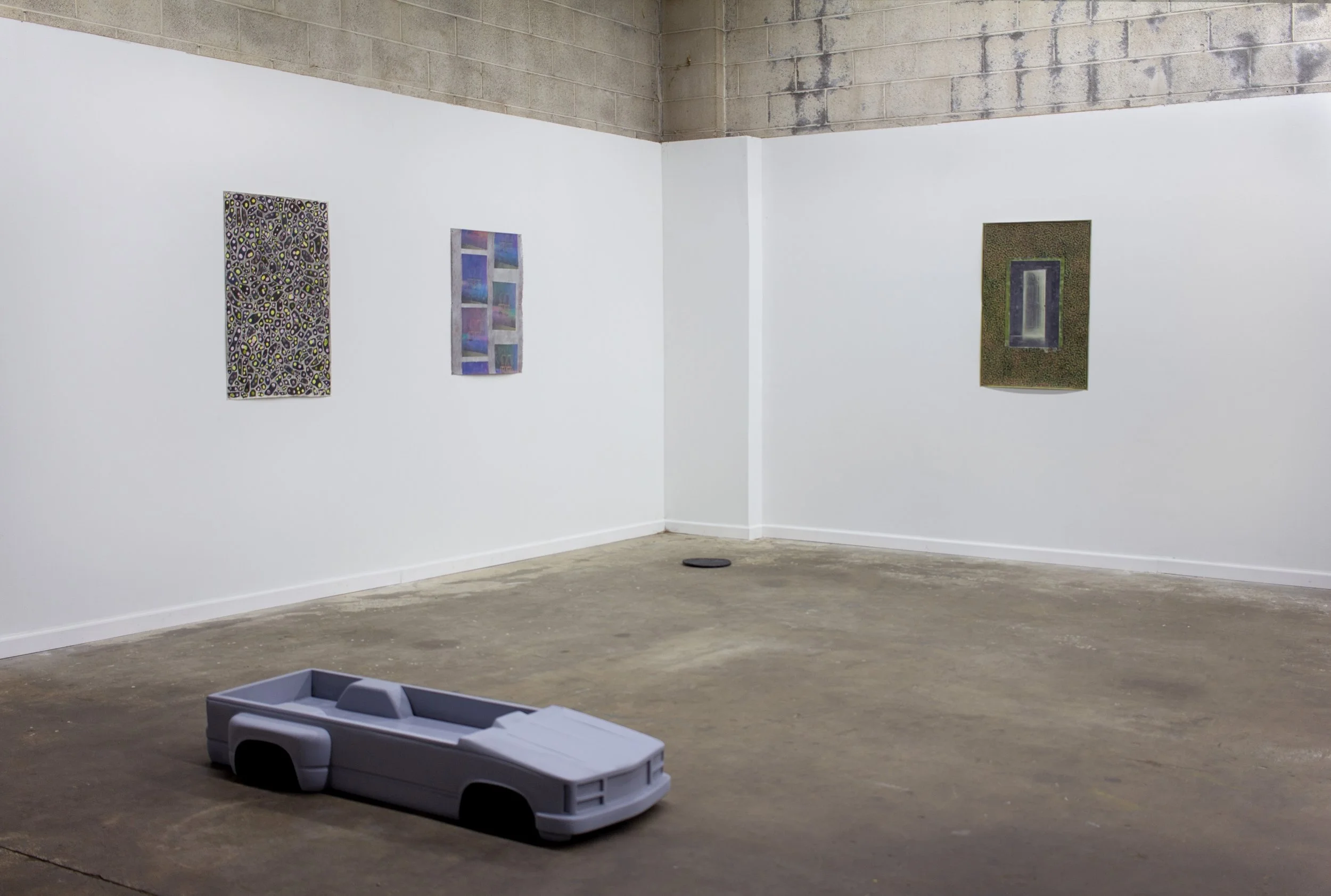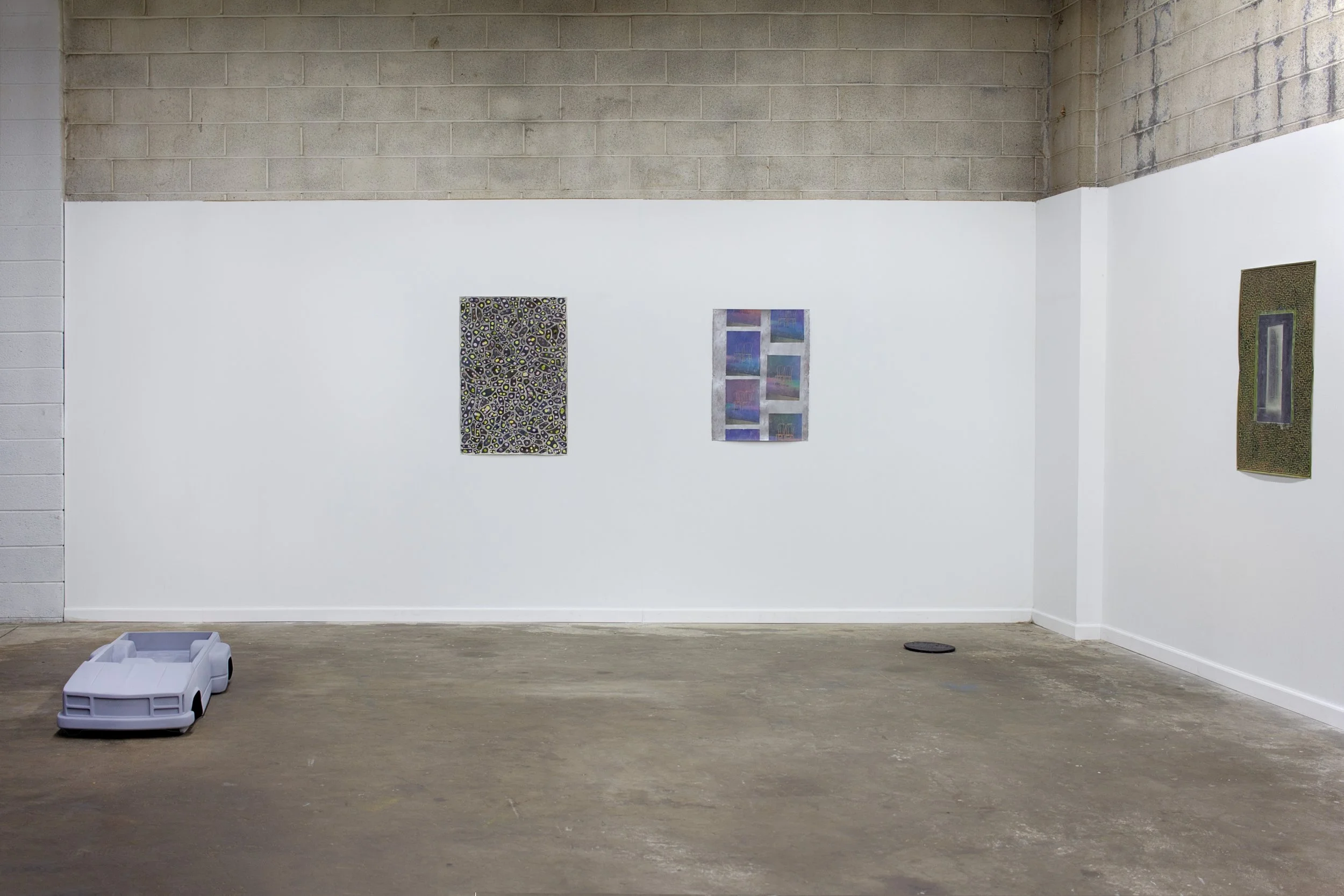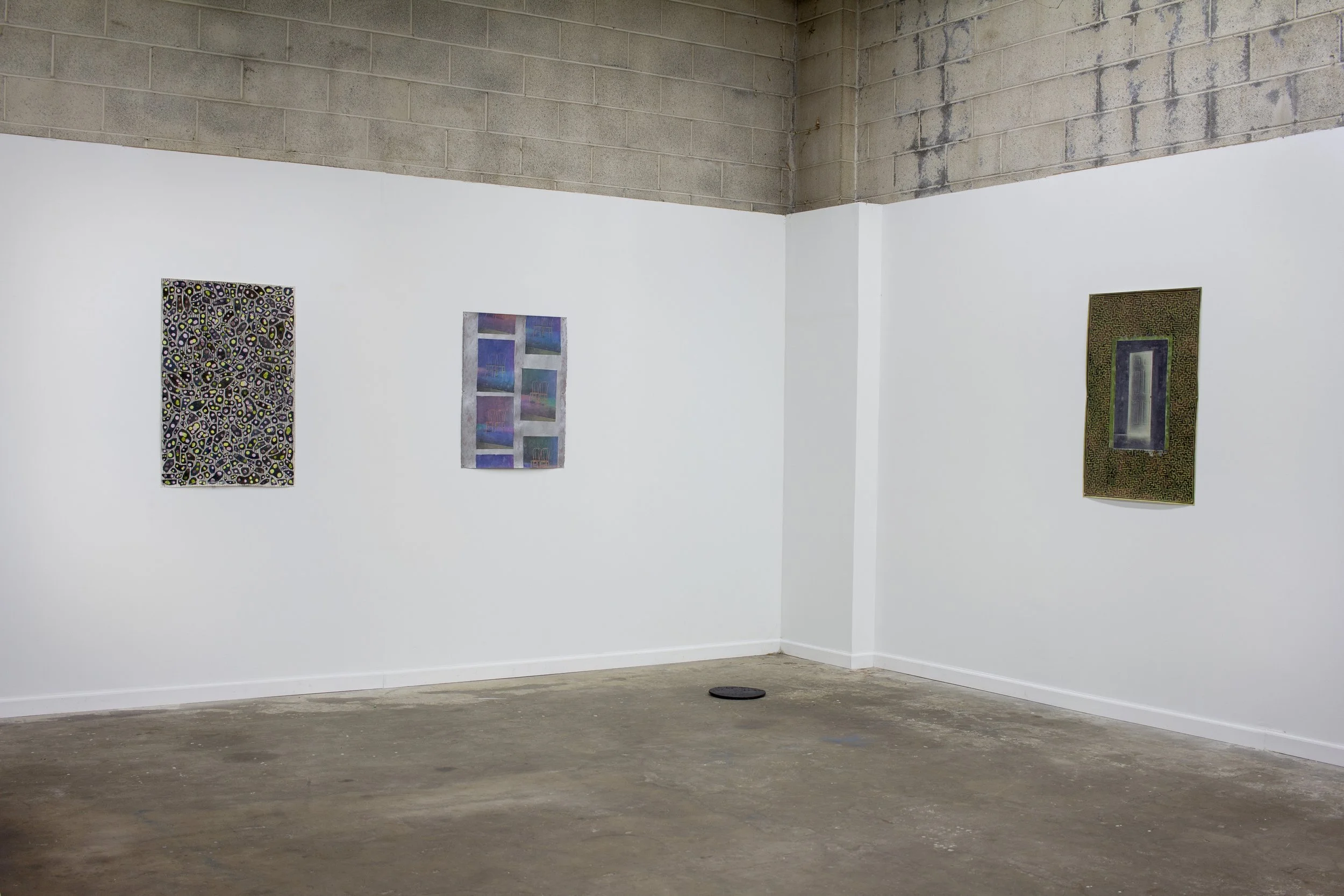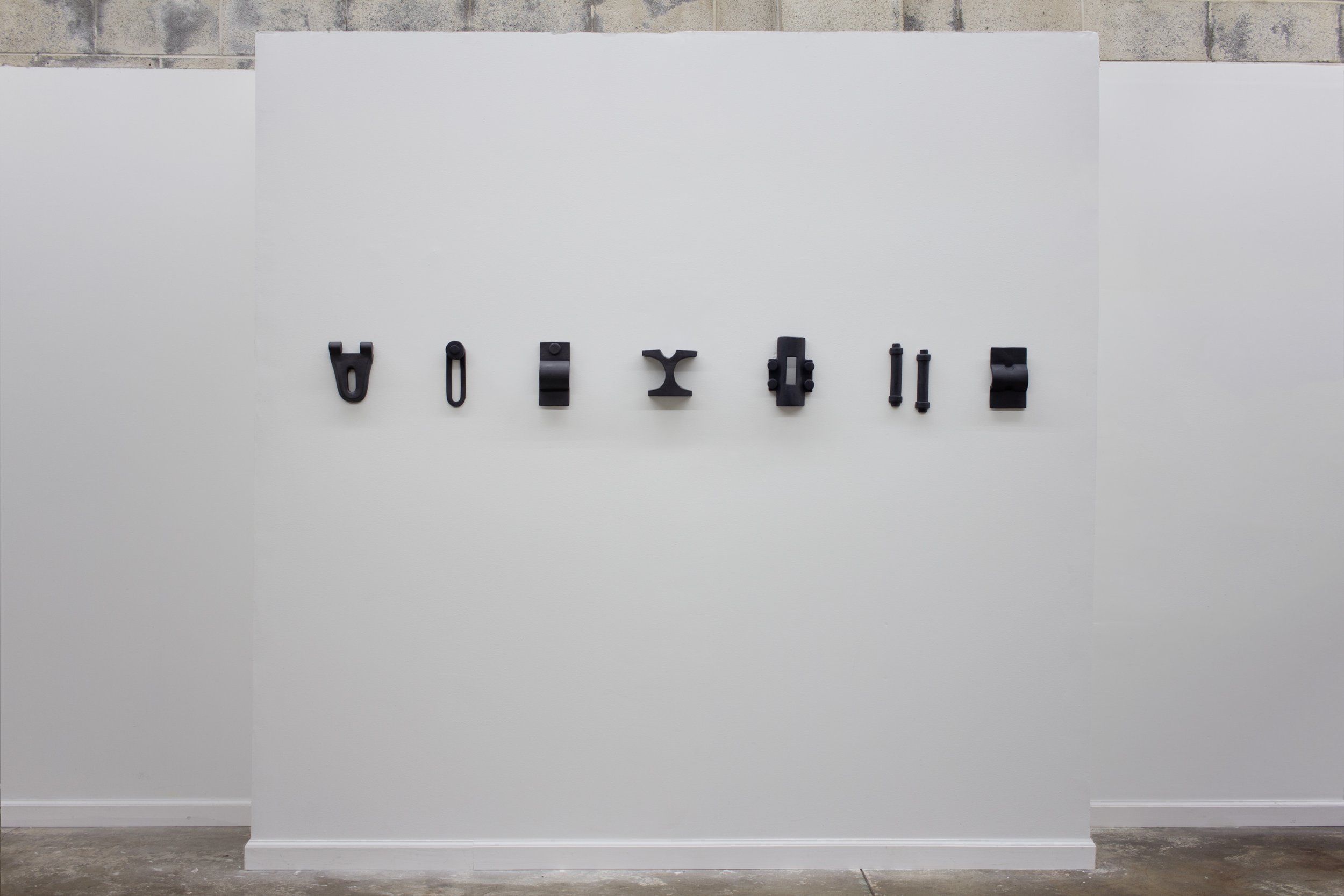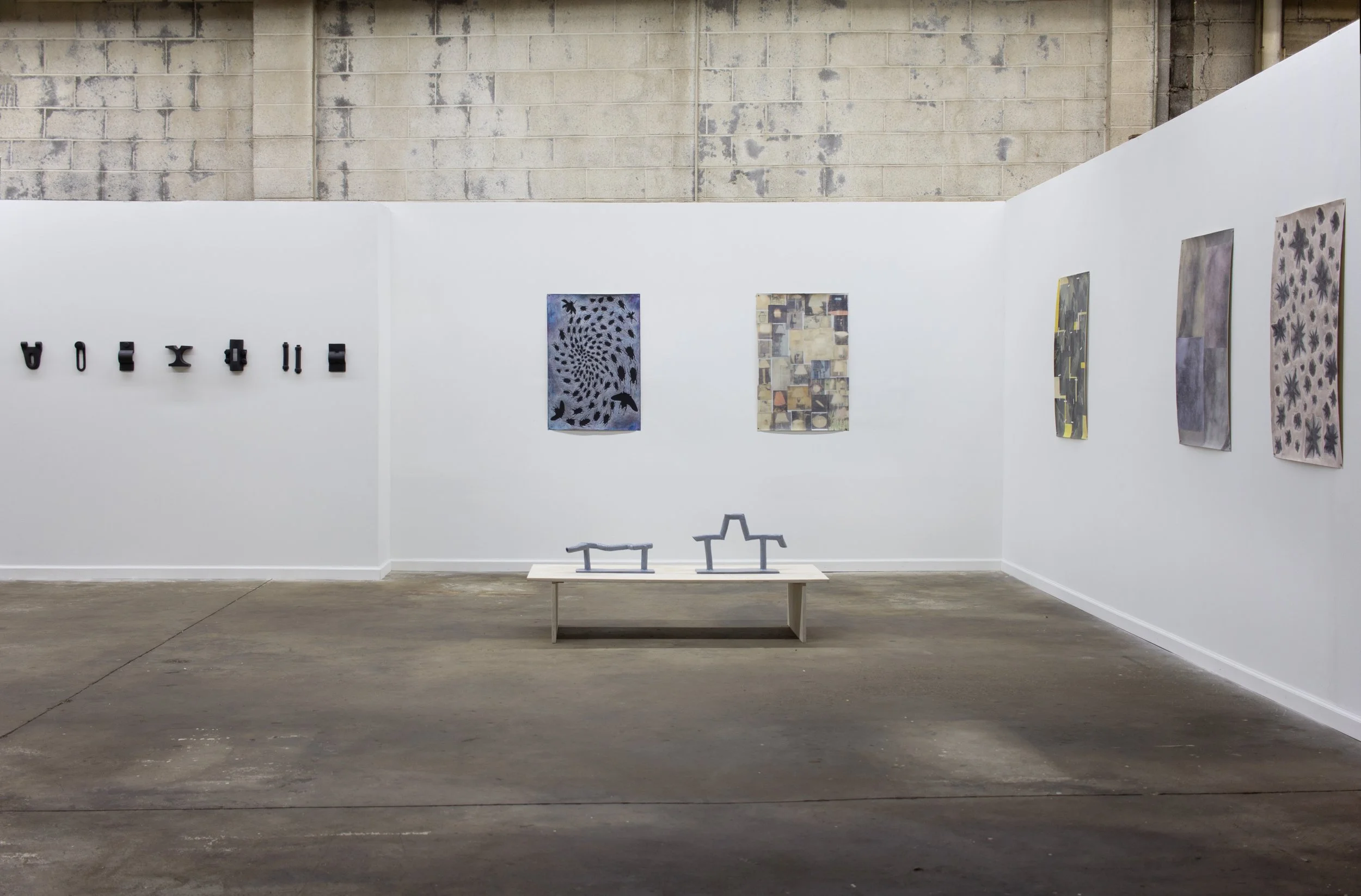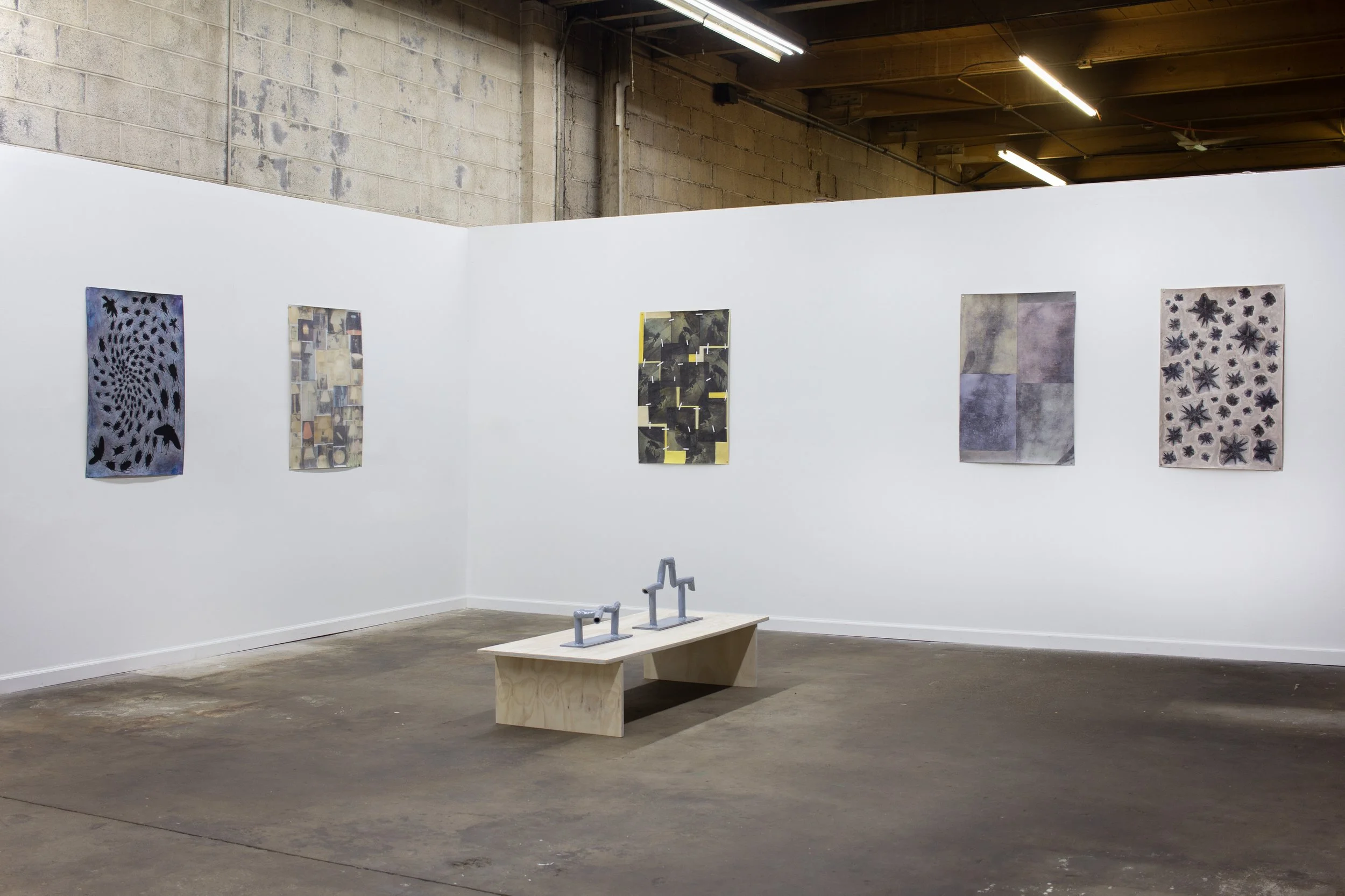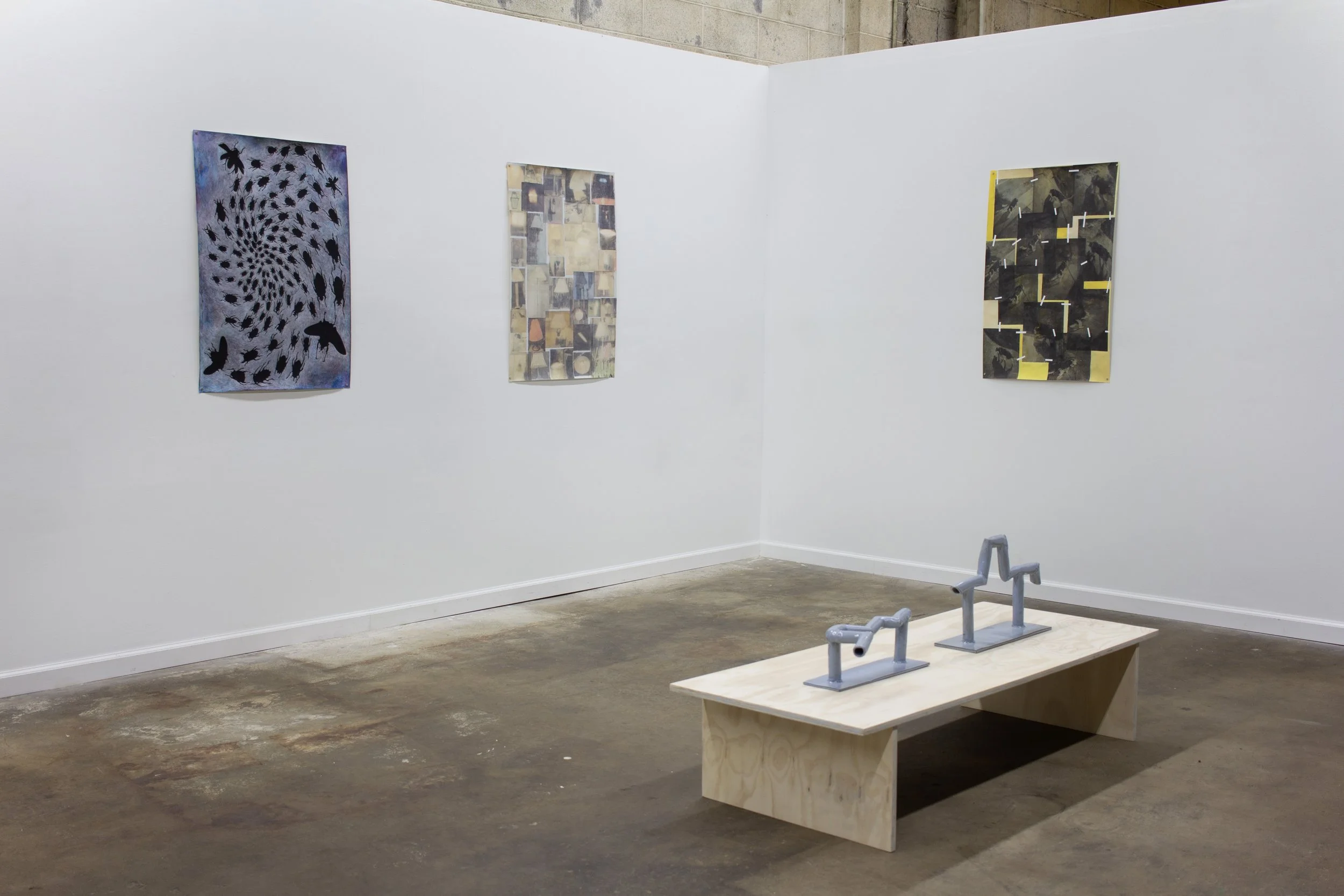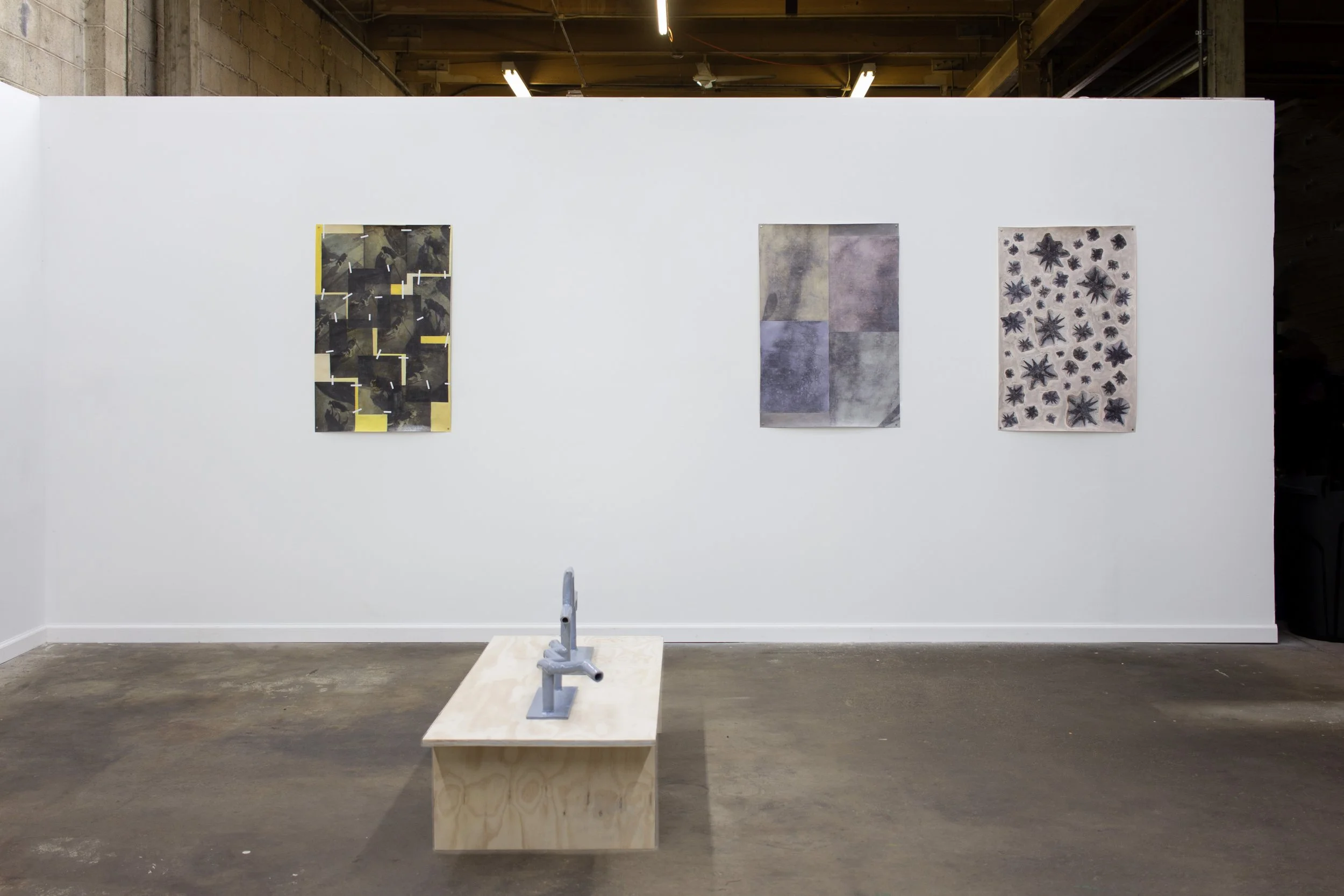We entered the labyrinth equipped as we were on prior attempts. Preparations took place over the course of 3 days, which was standard, and nothing about the pre-departure rituals elicited doubt in either of us. Morning was on the verge of breaking as we approached the inconspicuous facade, with a sliver of burnt pink softly outlining the far contours of the darkened landscape. The light grew, and we could begin to make out the scattered mechanical ruins that populate the area encircling the maze, backlit and ghostly. These derelict objects and structures of various sizes and proportions were a familiar sight to us, but exist as a vestige of something persistently unfamiliar. They are stark and metallic figures, yet their presence has grown faint by time and worn by the weather. Adorning the skeletal surfaces of many are unknown glyphs or illegible characters, and as we snaked amongst them, I watched you run your fingertips across the word-pictures in relief to gain some sense of understanding through touch. We followed the desire lines drawn by many before us through the final totemic wreckages, feeling the earth grow softer underfoot as we got closer to the wide entryway. When we arrived at the mouth of the labyrinth, it exhaled in our direction, full of life, and we were quickly enveloped by the incomparably deep smell of the raw clay that shapes its insides.
Brit Krohmer and Zack Rafuls work in intentional misalignments, path-making across uncertainties. Both speak in invented grammars, carefully working in fragments and flirtations to arrive at some strange poetry of mistranslation. Can friction be carefully calculated?
Pulling from a vocabulary of industrial utility and repair, Brit constructs steel-colored ceramics, makeshift joints, and bootleg blueprints rendered in the language of failure and effort. She is continually building systems that resist full comprehension, but hum with familiarity. Zack’s works on paper feel like signals from elsewhere- diaristic between-moments that veer from memory to dream and back. Each is a game with its own rational and residual code, often built from the inside out, and fleshed out through its own unique aesthetic incidentals.
There’s a slow logic here, built from the scrap and shimmer of every day, where meaning accumulates like dust: uneven, persistent, and hard to shake. In this shared space of near-misses and invented rules, openings are offered as things to turn over in your hands until they start to speak.
Zack Rafuls
all works:
mixed media on paper
2024 -2025
36 x 24”
Brit Krohmer
